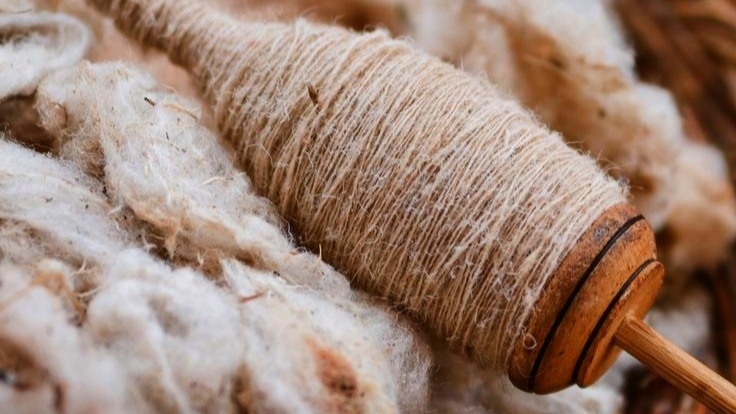The History of Textile Industry and Its Development
The textile industry is one of the oldest human industries, playing a crucial role in the economic, social, and cultural development of societies. It has evolved from early manual production to a sophisticated industrial system. This article examines the history of the textile industry from ancient times to the modern era, focusing on the evolution of technology and production processes.
History of Textile Industry
1. Ancient Times (Prehistoric to BCE)
The textile industry was among the first human crafts. Archaeological evidence suggests that fabric weaving began at least as early as 6000 BCE.
- Mesopotamia and Egypt: In these regions, people utilized natural fibers like flax for fabric production. Egyptians, in particular, excelled in linen manufacturing, using it for mummification and clothing.
- India and China: Cotton weaving was prevalent in India, while silk production flourished in China for thousands of years. The Silk Road played a significant role in transferring textile techniques across the globe.
2. The Middle Ages (500-1500 CE)
During this period, the textile industry developed into a professional craft in Europe and Asia.
- Europe: Wool became widely used in colder European regions. Additionally, silk textile production in Italy and Spain expanded due to trade with the East.
- Islamic World: The textile industry saw significant progress in the Islamic world, producing high-quality fabrics like velvet, brocade, and zari. Cities like Baghdad, Damascus, and Kashan became important textile production centers.
3. The Renaissance and the Industrial Revolution (1500-1800 CE)
With the rise of the Renaissance and advancements in science and technology, the textile industry underwent profound changes.
- Technical Innovations: The invention of early spinning and weaving machines, such as the spinning wheel, increased productivity.
- Industrial Revolution: The 18th-century Industrial Revolution in England marked a turning point for the textile industry. Key inventions from this period include:
- Spinning Jenny (1764): Invented by James Hargreaves, it significantly accelerated yarn production.
- Water Frame (1769): Developed by Richard Arkwright, it utilized water power for spinning.
- Power Loom (1785): Invented by Edmund Cartwright, it provided mechanical power for weaving machines.
These inventions led to mass production of textiles and cost reductions, establishing England as the global center of the textile industry.
4. The 19th Century and Early 20th Century (1800-1950 CE)
During this era, the textile industry experienced global expansion and new advancements.
- Complete Mechanization: Automatic spinning and weaving machines were introduced.
- Expansion of Synthetic Fibers: The invention of nylon in the 1930s by *DuPont* marked the beginning of synthetic fiber production, including polyester and acrylic.
- Globalization: Due to lower production costs, textile industries expanded to countries like India, China, and Japan.
5. The Modern Era (1950-Present)
The textile industry underwent significant transformation in the latter half of the 20th century and the 21st century, driven by technological innovations and shifts in the global market.
- Automation: The use of robots and automated systems increased production speed and quality.
- Smart Textiles: The development of textiles with advanced functionalities, such as color-changing abilities, heat generation, and water resistance.
- Sustainability: In recent decades, environmental awareness and sustainable development have led to the use of recycled fibers and energy-efficient production methods.
- Expansion of Digital Technology: The integration of 3D printing and digital design in fabric manufacturing.
The Role of Technology in the Development of Textile Industry
1. Advanced Spinning and Weaving: Modern machinery enables high-precision mass production.
2. Innovative Fibers: The creation of synthetic fibers like nylon and polyester has expanded fabric applications.
3. Environmental Technologies: Green production processes are used to reduce environmental impacts.
4. Artificial Intelligence: AI is applied in quality control and market demand forecasting.
Economic and Social Evolution of the Textile Industry
- Industrial Revolution: The textile industry was the first to capitalize on the Industrial Revolution, playing a key role in the development of the global economy.
- Global Trade: The trade of textiles and fabrics became one of the most important sectors in international commerce.
- Employment Generation: Throughout history, this industry has been a primary source of employment for millions of people, especially in developing countries.
Challenges and Opportunities in the Textile Industry
With the continuous development and growing demand for textile products and mass production, the industry has presented both income and job creation opportunities as well as certain challenges.
Challenges
1. Global Competition: Cost reductions in developing countries have put pressure on traditional manufacturers.
2. Environmental Pollution: The textile industry is one of the largest polluters, with high water consumption and chemical waste production raising concerns.
3. Sustainability: There is a growing need to reduce energy and chemical use in production.
Opportunities
1. Sustainable Development: The use of natural and recycled fibers is on the rise.
2. Innovation: The production of smart fabrics with advanced capabilities offers new possibilities.
3. New Markets: There is increasing demand for luxury and customized textile products.
The textile industry has evolved from manual production in ancient times to a sophisticated, global industry. It has played a pivotal role in the economic and social development of the world and continues to transform through technological innovations and environmental considerations. The future of the textile industry will depend on the integration of technology, sustainability, and consumer needs, ensuring its continued importance in the global economy.

Comments :